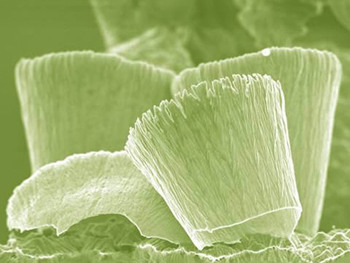As I’ve said in the past, and will undoubtedly say again, I won’t normally cover breaking news in this blog. Today I make an exception for news on “the nanotech threat.”
Word comes to us from Ron Turco at Purdue University that “neither dry nor water-based forms of buckminsterfullerenes—carbon nanoparticles containing only tens to hundreds of atoms called buckyballs—have ill effects on soil or the microorganisms it contains.”
This is good news for all the companies that are contemplating using fullerenes in their products. It is bad news for enviro groups that have long been playing up the hype on certain misread “buckyball and fish” studies (1).
While this study is encouraging, Turco “adds the caveat that he tested only a few types of nanoparticles and that further tests must be done on a broader array of particles before conclusions can be drawn.” I believe he is referring to other types of nanoparticles, such as nanotubes, which hold huge promise and are already being touted as the next big thing in materials, where strength and weight properties are paramount (think aerospace, military and space applications).
It is a fact that other nanoparticles need to be tested for toxicity, while at the same time recognizing the need for latitude in their use when embedded in polymers and such (where they are unlikely to become separated, any more than their larger cousins in the materials world).
Businesses that contemplate using nanoparticles in products that will come into direct contact with living tissues absolutely need to test them for potential toxic effects, just like they do for any other material for which the effects are not known.
I also recognize that until proven safe, factory workers need to be safeguarded when handling nanoscale materials, just like they do when handling other potentially harmful materials of any scale.
Regarding regulation, a quote from Chris Anderson (editor in chief of Wired magazine) comes to mind: "When the United States bans stem-cell research, it doesn't mean the end of stem-cell research; it just means that the work gets done elsewhere, including China or India, where the scientists and technology are nearly as good but the regulations are looser. Too much regulation and the science goes feral; too little and it may run wild at home." How do you achieve a balance? I like what Sonia Arrison (Director of Technology Studies, Pacific Research Institute) says: “…modest regulation, civilian research, and an emphasis on self-regulation and responsible professional culture.”
In an article titled
Can Nanotech Be Regulated? (2) and in response to the question “Will fair regulation of a field as complex as nanotechnology be possible without a radical new approach?” Richard Denison of Environmental Defense responded with: “We've dealt with some pretty tough issues in regulation and legislation, and I don't know if nano is so novel or so unique that it's going to require a whole new approach. We understand the basics of assessing hazard. We understand the basics of assessing exposure and mitigating exposure. Those need to be tailored and adapted to the characteristics of nanomaterials, but I don't know that we're talking about anything much more radical than that.” I’ll buy that.
Read the whole article
Scientist claims nanotech threat is exaggeratedhttp://www.eetimes.com/news/latest/showArticle.jhtml?articleID=198700342
(1) Howard Lovy in an article titled
Nano is a concept by which we measure our painhttp://nanobot.blogspot.com/2004/03/nano-is-concept-by-which-we-measure.html
(2) http://www.technologyreview.com/NanoTech/wtr_16176,319,p2.html










